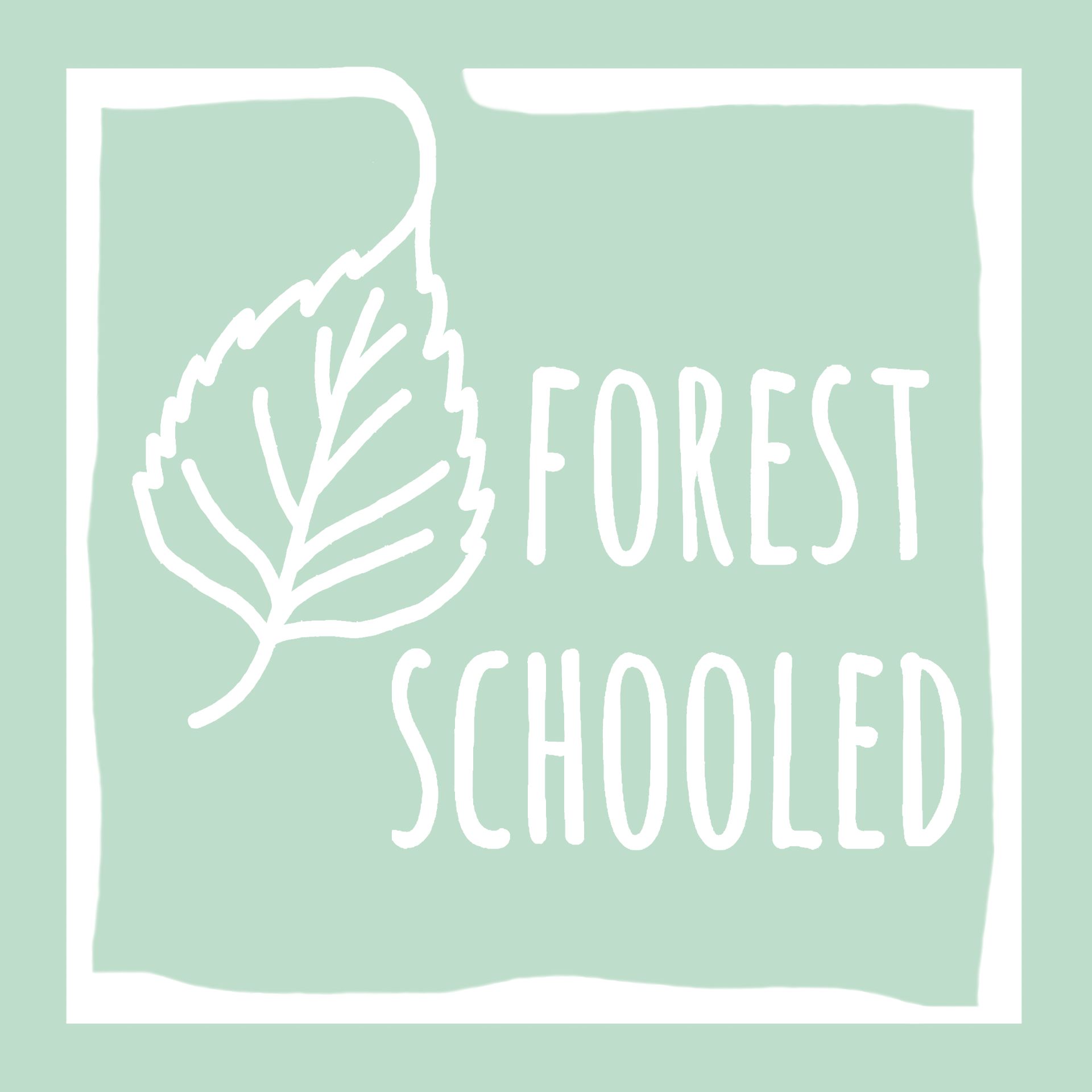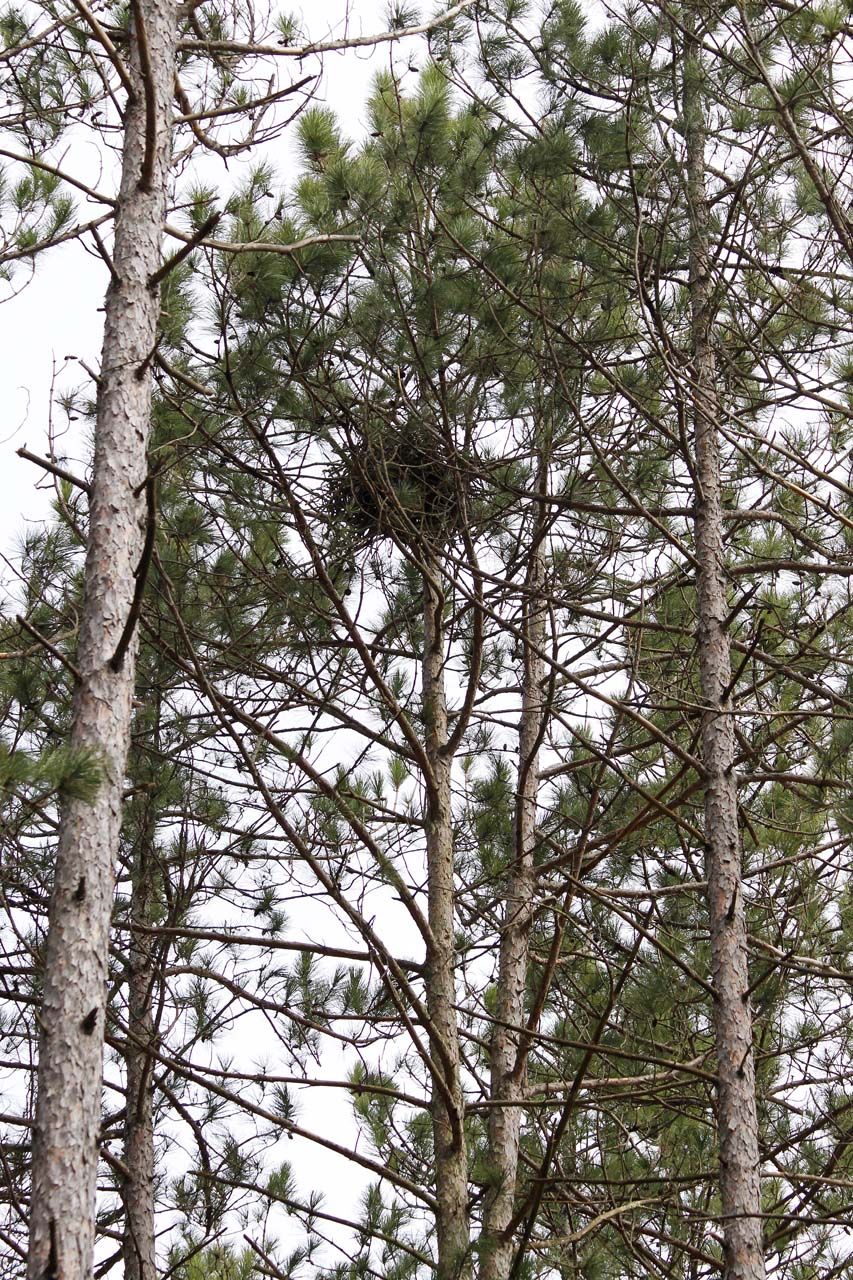
Blog
Stories from my personal journey learning about and delivering Nature-rooted programs across three different countries
Emergent Curriculum... when the lessons emerge with the Land
Caylin (Forest Schooled)

Empty space, drag to resize
There was a nest. It was high up in one of the pine trees. We thought it was just the remnants left over from the previous year until a raven swooped by and landed in it just as we were walking by with our group of kindergarteners during our “Forest Morning.”
Forest Mornings were introduced at this particular public school as a way to get the children outdoors, promote learning and wellbeing, and help support a new play-based kindergarten curriculum introduced in New Hampshire (find out more about how we started up this program in Integrating Forest School into a Public School Day). We knew that the benefits would be great when we started the program, but I don't think any of us realized how powerful the experience would actually be, not just for the children, but for us too. And that had a lot to do with a family of ravens.
The very first week of our Forest Morning program we noticed two black birds sitting on a tree on the other side of the school field. The children pointed them out on our walk to the forest and we noticed them again later that morning when they flew by. This began a line of inquiry that started with questions like, "Who were these birds?" "What were they doing?" "Why were they there?"
The forest we were visiting with the kindergarteners had been affectionately named "Raven's Wood" because some ravens had nested there in previous years (not to mention the mascot of the school was also a raven!). So a connection to ravens had already begun to form for us all. Seeing those black birds across the school field helped nurture the connection and our curiosity about the animal further.
So, the following week I brought some resources about ravens I thought the children might be interested in. I shared photographs and we sang a song together that described the differences between a raven and a crow, since both are relatively similar looking black birds. We learned about the differences in their calls and how the raven sounds a bit more like a croak. As we walked to the forest we pointed out the nest in the pine tree, which we assumed was currently unoccupied.
But we were so wrong...

Just as we were all gazing up at the nest, a raven flew directly overhead and landed straight in it! The children began to practice their raven calls and the air was filled with the noise of "Caw! Caw!" (kindergarten style). The raven, perched in the nest looking over us, then started to call back. It felt like a conversation was happening between us and the bird! It was an interaction I could never have planned for and an incredibly memorable experience.
As we played in the forest later that morning we observed the ravens fly to and from the nest carrying sticks in their beaks. This inspired more questions like, "Where are they going?" "Why are they looking for sticks?" "What are they doing with the sticks?"
The ravens were teaching us about nest building.
So the following week I brought a few more things with me. The nest was so high up in the pine tree that it was a little difficult to see. I brought a pair of binoculars to get a better view of the nest and the raven that, again, had very timely perched itself on the nest while we were there. I also brought in an abandoned nest that had been blown out of a tree so the children could examine what a nest can look like up close. Our experiences that day inspired further questions like, "Which animals build nests?" "What materials do animals use to build nests?" "What do animals use nests for?"
The ravens were teaching us about adaptations and life cycles.
Now, what happened the following week was something none of us could have predicted... When a colleague of mine arrived at Raven's Wood to set up for one of the kindergarten classes, she noticed some Parks & Recreation staff cutting down trees in the area directly near the nest! They told her the trees had been inspected and some had to be taken out for safety reasons (the forest was a public park). She was informed that the tree with the nest had been identified as one that had to come down. When she told the rest of us, the news hit us harder than we thought it would.
If the tree maintenance had occurred just a few weeks before we'd initiated the Forest Mornings program, it's likely none of us would have noticed or cared all that much. But now? We were devastated.
We wondered whether the children would want to write letters or make signs to try to save the tree and the nest. We also contacted the Director of Parks & Recreation and explained the situation, including how our weekly Forest Mornings had built up such a strong connection to the nest and the ravens that it would be a major loss to us. I mean, we and our group of 5 year olds were having conversations in raven language with them every week!
Thankfully, the Parks Director was very gracious and said they would at least leave the tree until after the baby ravens had fledged... phew! We all felt a flood of relief.
The ravens were teaching us about loss and love.

As the weeks went by we continued to watch and interact with the ravens each time we went to the forest. They seemed to always show up right as we got there and would call out to us. Then one exciting morning as the raven flew over and landed in the nest, we didn't hear the usual "Caw! Caw!", but instead heard a chorus of "Cheep! Cheep!" The hungry little baby ravens had hatched from their eggs! That morning we watched the parents search for food on nearby trees and deliver it to the nest. We asked more questions like, "What do baby ravens eat?" "What are the ravens finding on the trees to feed them?"
The ravens were teaching us about birth and growth.
Our partnership with the school ended soon after that and the teachers took the lead on the program, continuing forest mornings on their own. But several weeks later I opened my email to find one of the teachers had sent a video of the pine tree with small ravens swooping around the nest. The baby ravens had fledged. I smiled.
The ravens were teaching us about regeneration and hope.

I have spent much time over the years reflecting on the "emergent" nature of Forest School. However, it was through Forest Mornings with this group of kindergarteners, teachers, and the ravens, that I started to gain a much deeper understanding of how learning outdoors is profoundly entwined with the land. I learned that not only does Forest School facilitate learning by enabling us to interact with the natural world, it also allows us to notice and appreciate when the natural world interacts with us. Such learning comes with rich and deep connection.
It also gave me the opportunity to reflect on the meaning of "curriculum." In many Western education systems, we have come to expect that (human) teachers are the creators of an educational experience and that a teacher's role is to develop and refine curriculum. But, what happens when we let the curriculum emerge? When we listen to what's happening around us? When we spend time in the outdoors, notice it, acknowledge it, learn from it?
Through asking these questions, I've come to understand that we are not the only teachers. The land is too.
"In place-responsive outdoor education, meanings will come about through the acceptance of knowledge emerging through the on-going entanglement of people / place / the-more-than-human."
-Mannion & Lynch, 2016, p.92
Notes & Resources:
For more information about "Emergent Curriculum" see http://elc.utoronto.ca/about-us/emergent-curriculum/.
I'm also learning and grappling with how to foster respectful and meaningful connections to land that has a history of colonization. I highly recommend the course Reconciliation through Indigenous Education through the University of British Columbia. You can also find out more about my own journey in the blog post Facing Colonization in our Work with the Land & Building our Understanding of Indigenous Perspectives.
For an interesting discussion on a "Place-essential approach" see Mannion, G. & Lynch, J. (2016) The primacy of place in education in outdoor settings. In Barbara Humberstone, Heather Prince, Karla A. Henderson (Eds) International Handbook of Outdoor Studies. Routledge (pp 85-94).
More Posts
WANT TO GET FOREST SCHOOLED TOO?
Subscribe to my email letters, something special from me to you so we can learn together. Each one is filled with heart-felt stories from the forest, resources you may find useful, and things that hopefully bring a smile too.
Thank you!
© by FOREST SCHOOLED
